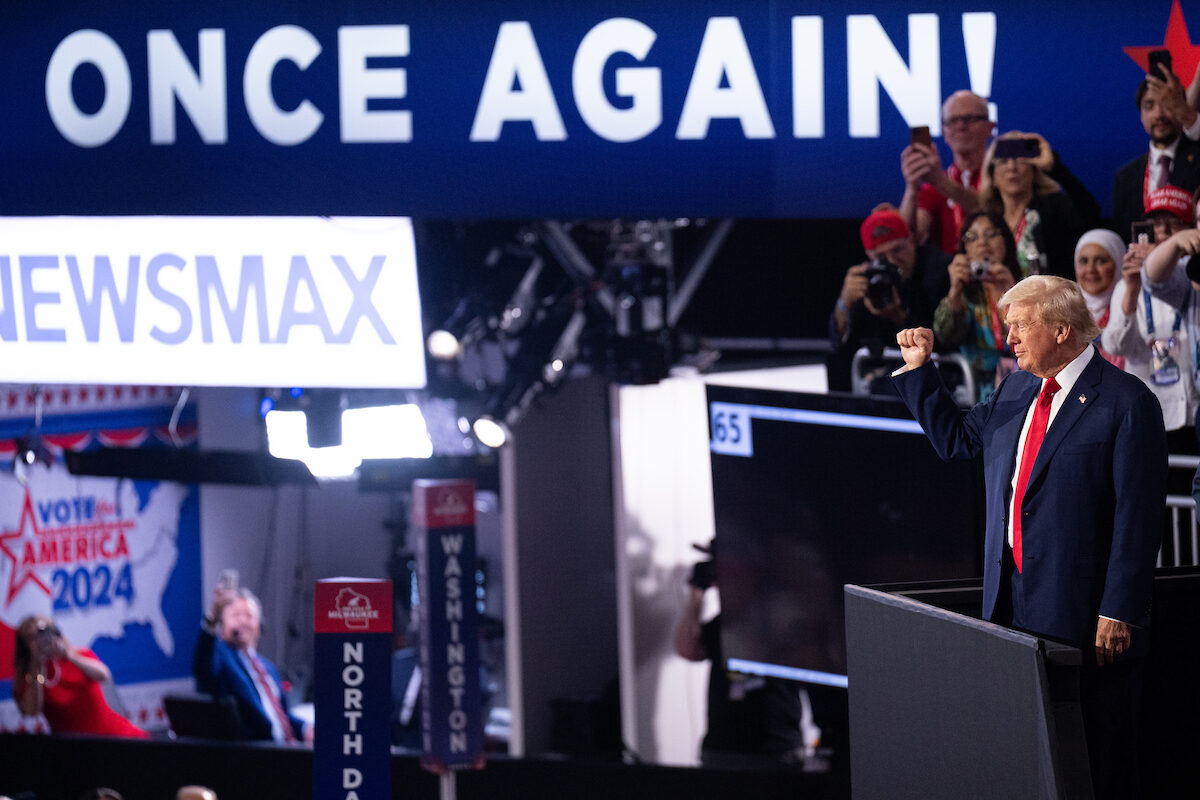MILWAUKEE — ANALYSIS: In the aftermath of the attempted assassination of former President Donald Trump, the calls for civility and unity have come steadily.
But even assuming there is some pivot toward gentler political rhetoric, Trump deployed inflammatory language more regularly during his White House tenure than has the man he is attempting to defeat in the 2024 election, President Joe Biden.
Tasking two popular large language models (OpenAI Moderation filter, version 1, release 007 and Anthropic’s Claude 3.5 Sonnet) with identifying harmful content in Roll Call Factba.se’s transcripts of Trump’s and Biden’s public events as president resulted in rhetoric from both flagged as being potentially harassing and/or violent.
While AI moderators can sometimes struggle to appreciate context or tone, then-President Trump’s speeches were more than six times more likely to contain statements that the models identified as inflammatory. From the starts of their presidencies to day 1,272 of each of their tenures — July 14 in 2020 for Trump and 2024 for Biden — 1 percent of Biden’s events had a flagged remark and 6.9 percent of Trump’s did. Put another way, that amounts to Trump being flagged every 2 hours, 9 minutes and 9 seconds of speech. Biden gets a flag every 14 hours, 21 seconds of speech.
Of course, the dynamics of the race changed markedly on Saturday when Trump survived an assassination attempt at a rally in Butler County, Pa. Both men have since made pleas for unity from the public, at the same time they try to make the case that the other is unfit for a second White House term.
On the opening night of the Republican National Convention here, speakers mostly stuck to the program, accusing Biden of making life miserable while avoiding some of the most pointed rhetoric that has become commonplace.
One exception came from Sen. Ron Johnson, R-Wis., who called Biden and his vice president, Kamala Harris, a “clear and present danger.” Johnson later clarified that was an old speech, and the new one just hadn’t been loaded into the teleprompter, a claim that served to validate the GOP’s marching orders to tone things down.
Trump himself told the Washington Examiner on Sunday that he was tempering his speech, but in doing so revealed there is still an edge behind whatever touch-ups might be coming.
“I think it would be very bad if I got up and started going wild about how horrible everybody is, and how corrupt and crooked, even if it’s true,” he said.
Trump gives his keynote speech on Thursday to cap off the convention, an event that will reveal which speech gets loaded into the teleprompter.
For his part, Biden went on prime-time TV in an interview with NBC’s Lester Holt, serving as counter-programmer in chief on day one of the GOP gathering and touching on both his and Trump’s use of language.
Responding to criticism of his saying recently that it was time to put Trump in a “bulls-eye,” Biden said he shouldn’t have said that. But he also accurately said Trump’s use of violent language stretched back years, and he accused his rival of having contributed heavily to the coarsening of the current political situation.
Whether either man can dial back some voters’ thirst for conflict is another open question. From the gaveling in of the GOP convention early Monday afternoon to the end of that evening when a bandaged Trump appeared in the arena to wild applause, the delegates here had a singular, consistent chant, echoing Trump’s exhortation Saturday on the stage in Butler right after the shooting: “Fight, fight, fight.”
Bill Frischling and Ryan Kelly contributed to this report.





